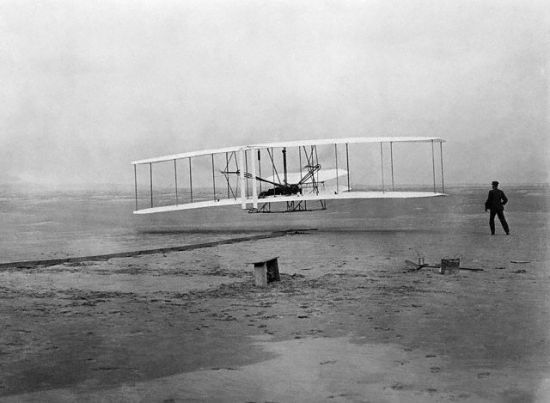
Today marks the 113th anniversary of the famous Wright Brothers flights at Kill Devil Hills near Kitty Hawk, North Carolina in 1903. Their first flights, however primitive, opened the door to aviation technology that has flourished since then.
From Wikipedia:
The Wright brothers, Orville (August 19, 1871 – January 30, 1948) and Wilbur (April 16, 1867 – May 30, 1912), were two American brothers, inventors, and aviation pioneers who are generally credited with inventing, building, and flying the world’s first successful airplane. They made the first controlled, sustained flight of a powered, heavier-than-air aircraft on December 17, 1903, four miles south of Kitty Hawk, North Carolina. In 1904–05 the brothers developed their flying machine into the first practical fixed-wing aircraft. Although not the first to build and fly experimental aircraft, the Wright brothers were the first to invent aircraft controls that made fixed-wing powered flight possible.

They were the first to really “put everything together”, and they did that by looking at the aeroplane as a system, and then taking the system apart and analyzing how each part worked, and how it worked in relation to all the other parts.
They were also the first to analyze propellers, and realize how they worked, as an “airfoil in rotation”.
When the Smithsonian recreated their original Flyer, they tested the propellers, and found them to be over 80% efficient. Even with today’s “computer designed” propellers, it’s hard to reach something like 87% efficiency.
They were truly remarkable men, well ahead of their time in understanding the basics of controlled flight. Many had made straight glides, but the Wrights turned the aeroplane into a useable machine.
When I visited Kitty Hawk in 1993, I bought a hard-cover book describing all the events leading up to the first flights. I was amazed by the detailed engineering and analysis that went into the airframe, engine and propellers. It was a great book published for the 90th anniversary – sadly the book was lost in the great flood in the Torrance house along with many other precious items for which we were barely compensated by the insurance.